Lieutenant Colonel James D. Johnston
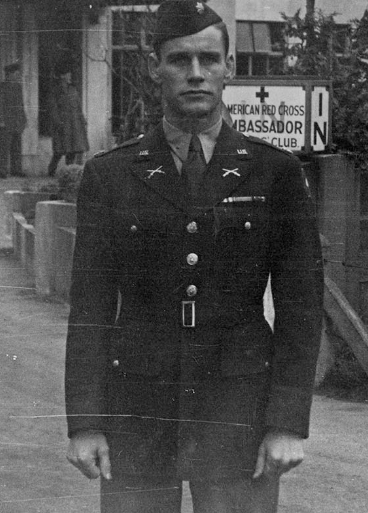
- Unit: 9th Infantry Division, 47th Infantry Regiment
- Service Number: 353584
- Date of Birth: October 20, 1915
- Entered the Military: December 25, 1940
- Date of Death: June 29, 1944
- Hometown: Barium Springs, North Carolina
- Place of Death: near Acqueville, France
- Award(s): Silver Star, Bronze Star, Legion of Merit, Purple Heart
- Cemetery: Plot E, Row 26, Grave 37. Normandy American Cemetery, Colleville-sur-Mer, France
Mentored by Ms. Lou Ann Rives
2015-2016
Early Life
James Davidson Johnston was born on October 20, 1915, in Lincolnton, North Carolina. Soon after his birth, his family moved to Barium Springs. He was raised in Presbyterian Orphans’ Home, now known as the Children’s Hope Alliance, where his father worked as the superintendent from 1922 to 1949.
He graduated from Barium Springs High School and then entered Davidson College in North Carolina. He was the track team captain, competing in discus and javelin events, and a “lettered” football player. An active member of the ROTC, a First Lieutenant, Johnston also earned a spot in Scabbard and Blade, a college military honor society. Following his college graduation, Johnston worked at Firestone Tire and Rubber Company while living in a boarding home in Charlotte. Johnston became engaged before enlisting in the military. When he was called to active duty, he was forced to leave his fiancée, Dee, behind.
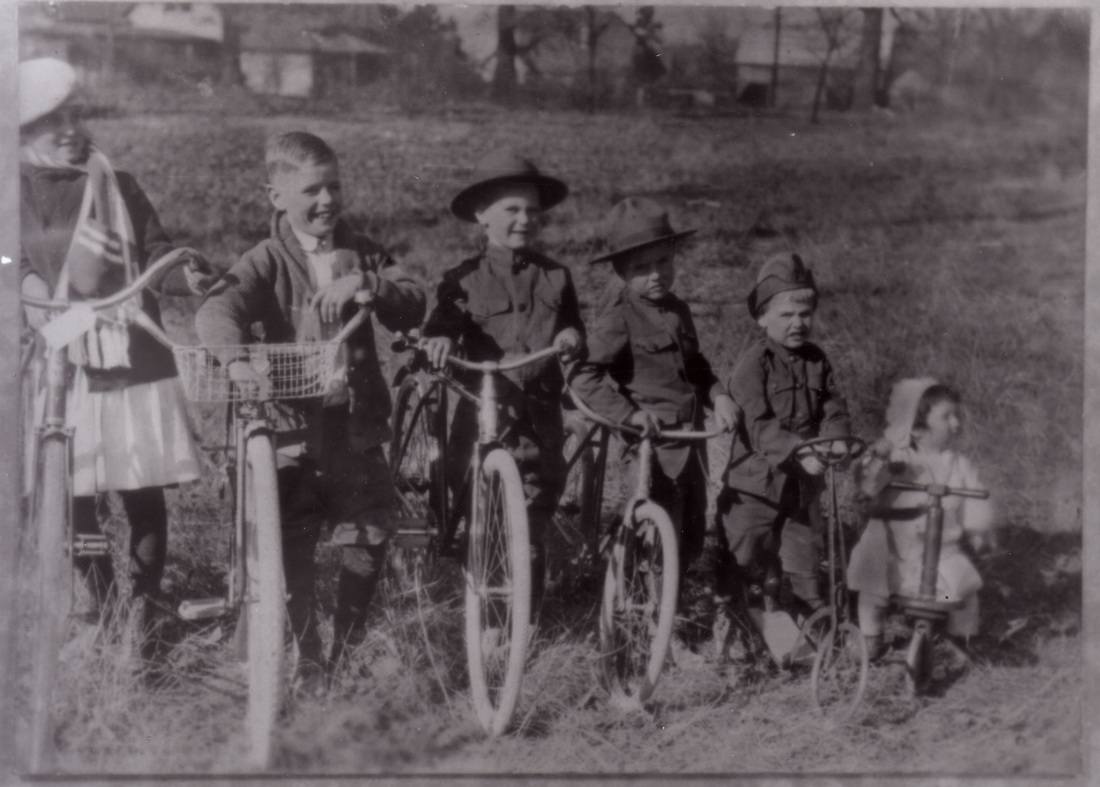
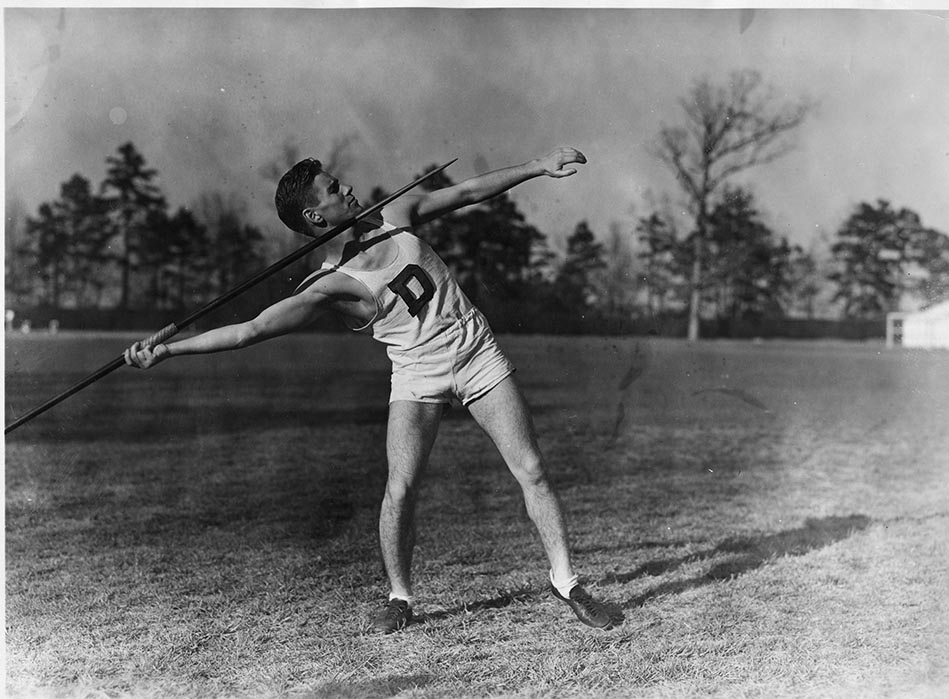
Homefront
North Carolina was actively involved in the war efforts in the early 1940s. Located in North Carolina, Fort Bragg is one of the nation’s largest military bases today. In addition to serving as a training site for units like the 9th Infantry Division, Fort Bragg was home to between 2,000 and 3,000 German Prisoners of War (POWs) during World War II. Throughout the state, the POWs were used as laborers on military bases and local farms, assisting with pulpwood harvesting and other farm tasks.
North Carolina also had many industries that contributed significantly to the war. The state was fourth in the production of lumber supplied to the military and the largest textiles provider to the armed forces. Wilmington’s North Carolina Shipbuilding Company constructed dozens of ships for the U.S. Navy between 1941 and 1945.
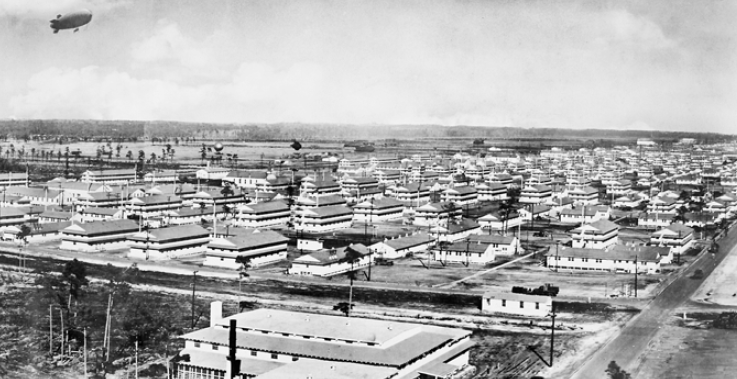
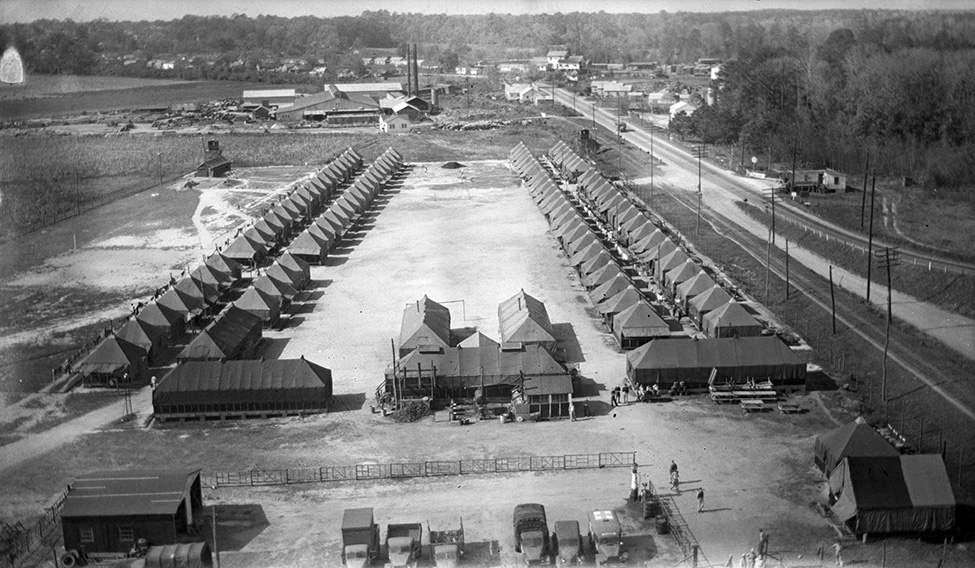

Military Experience
James Johnston was commissioned into the U.S. Army on December 25, 1940, at Fort Bragg, North Carolina as a second lieutenant.
The 9th Infantry Division trained in the Carolinas, specifically for amphibious landings. After training, they were sent to Casablanca, Morocco, and engaged in the first amphibious invasion led by the U.S. Army in World War II. While landing on the beach, Johnston learned that the gunfire was from French troops under the command of Marshall Philippe Pétain.
His division marched across North Africa through Oran, Algeria, and the Kasserine Pass into central Tunisia. There, he experienced his first combat on November 8, 1942. He also fought in the Battle of El Guettar on March 28 through April 7, 1943, and in the Battle of Sedjenane – Bizerte on May 4-10, 1943. Throughout his experiences in North Africa, he received a Silver Star for his “gallantry in action.”
Johnston had the honor of meeting King George VI, the reigning monarch of the United Kingdom during World War II, when he served in Algeria on June 13, 1943. During the visit, King George inquired on how his troops stayed unusually clean despite the infamous North African dust and dirt. Johnston promptly replied, “With lots of soap and elbow grease, Your Majesty,” leaving the King to inquire about the ingredients of “elbow grease.”
After fighting in North Africa, Johnston stormed Sicily’s beaches on June 17, 1943, then fighting in the Battle of Cesaro from August 7-10, 1943. By November 1943, the 47th Infantry Regiment set sail for England to train for the D-Day invasion. On D-Day plus 4, Johnston debarked on Utah Beach.
For the invasion, Johnston commanded the 2nd Battalion, 47th Infantry Regiment (also known as the “Raider Regiment”), 9th Infantry Division. After fighting his way westward through France up the Cotentin Peninsula, his Battalion established an observation post in Acqueville used for reconnaissance preparation.
Johnston called for tank reinforcements, but on June 20, 1944, a German 88mm round lacerated his abdomen as he stepped out the door. After being seriously wounded in action, Johnston gave the ultimate sacrifice on June 29, two days after Cherbourg’s liberation. This was vital to the Normandy campaign since Cherbourg was a major harbor that provided a deep water port that the Allies so desperately needed to bring in materials and supplies. For Johnston’s devoted service, he was posthumously awarded the Legion of Merit and Bronze Star.
Following his death, many local community members attended the memorial service dedicated to the soldiers whose lives were taken during the D-Day invasion. Johnston’s close friend Lewis “Chippy” Maness and his wife, Mary, sent a letter to the Johnston family letting them know they named their son, Jimmy, after Johnston. Johnston’s fiancée remarried and called her firstborn James after Johnston.
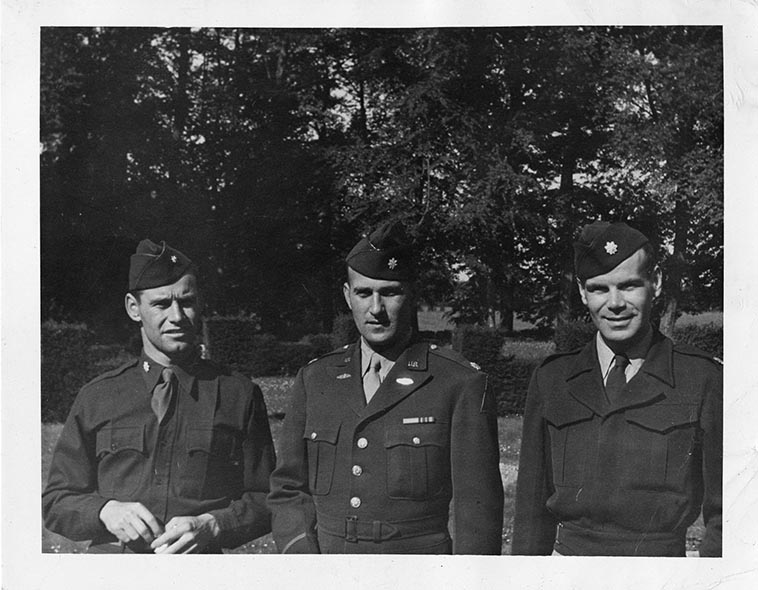

Eulogy
On June 20, 1944, Lieutenant Colonel James Davidson Johnston led his battalion through Cherbourg, France. After securing an observation post, he set out to call for reinforcements. As he stepped out the door, a German 88mm shell exploded feet away from him. Nine days later, on June 29, 1944, Johnston gave the ultimate sacrifice. His life ended in a small town in France, just like the small town where he was born in North Carolina.
Today, we thank all soldiers for their sacrifice to secure peace, freedom, and prosperity. Johnston gave his life following his dedicated service to the U.S. Army and was instrumental to the freedom granted to us today. But Johnston was not just another number; he was not only one of the 10,000 Allied casualties during D-Day. He was a fiancé; he was a brother; he was a son. So today, we honor his family, who have been reconnected from the Carolinas to California through this experience, and we celebrate his story among thousands of others waiting to be told.
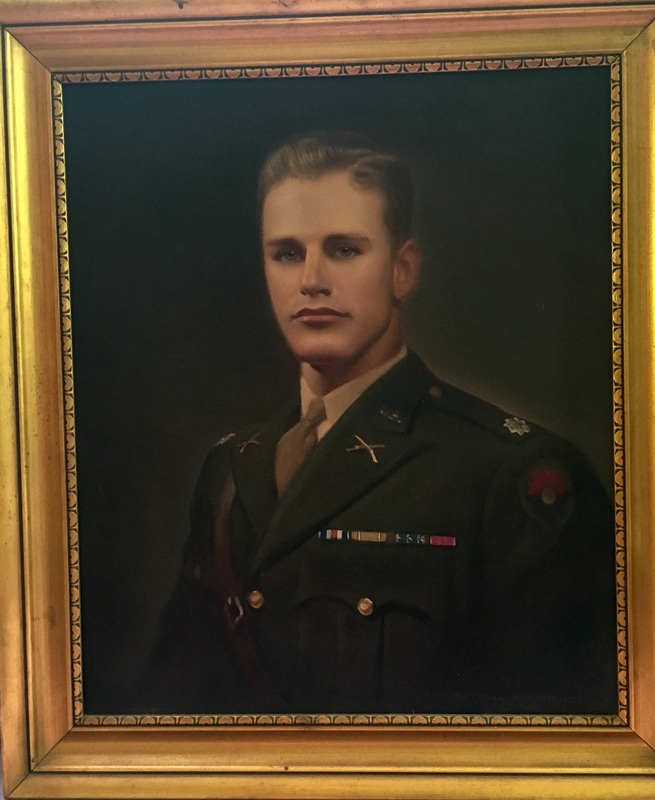
Reflection
The Normandy: Sacrifice for Freedom Student & Teacher Institute was indeed a transforming experience. From the intense research to the trip of a lifetime, I have grown exponentially in my knowledge about World War II and the D-Day campaign immensely. Before participating in the program, I had a limited perspective of the success that took place on Normandy’s beaches and the repercussions it had on modern society. Imagining the world lacking the freedoms secured through the lives given on those beaches is an eerie thought. Through my studies, while participating in the institute, I have been encouraged to study and learn more about this crucial time period in humanity’s history.
There has been so much that I learned about D-Day and the contribution from the U.S. Armed Forces. Looking at the massive field of grave markers overlooking the beaches where thousands of lives were lost was a haunting reminder of the number of stories that have gone untold. By looking at history from a perspective beyond numbers and facts, the 15 personal stories learned from this experience have provided me with the insight to understand history through a personal lens. Yet, the experience has also revealed that we all carry a certain responsibility to ensure that these stories are told. If we fail to do so, history is lost, which is the ultimate detriment to humanity.
Bibliography
Primary Sources
After Action Report-Movement of the 47th Inf. from 6-13-44 to 7-1-44, July 23, 1944; Record Group 407; National Archives at College Park, College Park, MD.
Casualty Report; List of Killed in Action, James D. Johnston: Died of Wounds, June 1944; Record Group 407; National Archives at College Park, College Park, MD.
General Orders No. 6: Award of Combat Infantryman Badge to Lt. Col. Johnston, May 25, 1944; Record Group 407; National Archives at College Park, College Park, MD.
General Orders No. 47: Posthumous Award of Bronze Star Medal to James Johnston, June 22, 1944; Record Group 407; National Archives at College Park, College Park, MD.
Quips and Cranks [Davidson College Yearbook, 1937]. Digital NC. Accessed May 8, 2020. lib.digitalnc.org/record/29076?ln=en#?c=0&m=0&s=0&cv=0&r=0&xywh=-2014%2C-197%2C6480%2C3937.
Johnson Family Portraits. Courtesy of Douglas Marion.
James D. Johnson Photograph Collection. Davidson College Archives and Special Collections.
Launching of the SS John P. Mitchell. May 23, 1945. Photograph. North Hanover County Public Library (NCRPC807). cdm16072.contentdm.oclc.org/cdm/singleitem/collection/p16072coll1/id/301.
Report of 47th Inf. Sicilian Campaign (indication Major Johnston is 2nd Battalion Commander), September 20, 1943; Record Group 407; National Archives at College Park, College Park, MD.
Rice, Eugene. Aerial photograph of the barracks…Williamston, N.C. c.1943-1945. Photograph. East Carolina University Digital Collections (0488-b22-fd-i4). digital.lib.ecu.edu/4524.
S2 & G2 Periodic Reports; Reports on Enemy Operations and Situations, June 14-23, 1944; Record Group 407; National Archives at College Park, College Park, MD.
Secondary Sources
Billinger, Jr., Robert D. and Jo Ann WIliford. “World War II.” NCPedia. Updated 2006. Accessed May 8, 2020. www.ncpedia.org/world-war-ii-part-4-prisoners-war.
“Fort Bragg History.” U.S. Army Fort Bragg. Accessed May 8, 2020. home.army.mil/bragg/index.php/about/fort-bragg-history.
“James Johnston.” The Charlotte-Mecklenburg Story. Accessed May 8, 2020. www.cmstory.org/exhibits/gold-star-veterans-veteran-records/james-johnston.
“James D. Johnston.” American Battle Monuments Commission. Accessed May 8, 2020. www.abmc.gov/decedent-search/johnston%3Djames-3.

